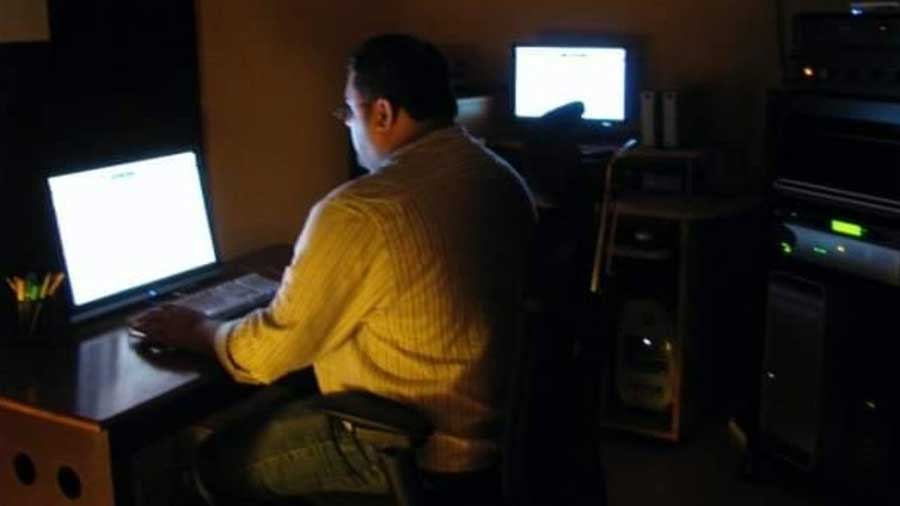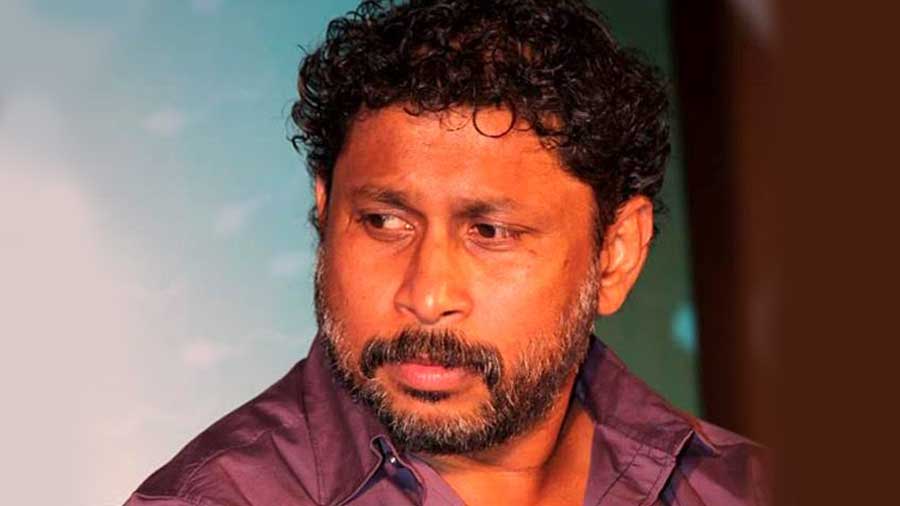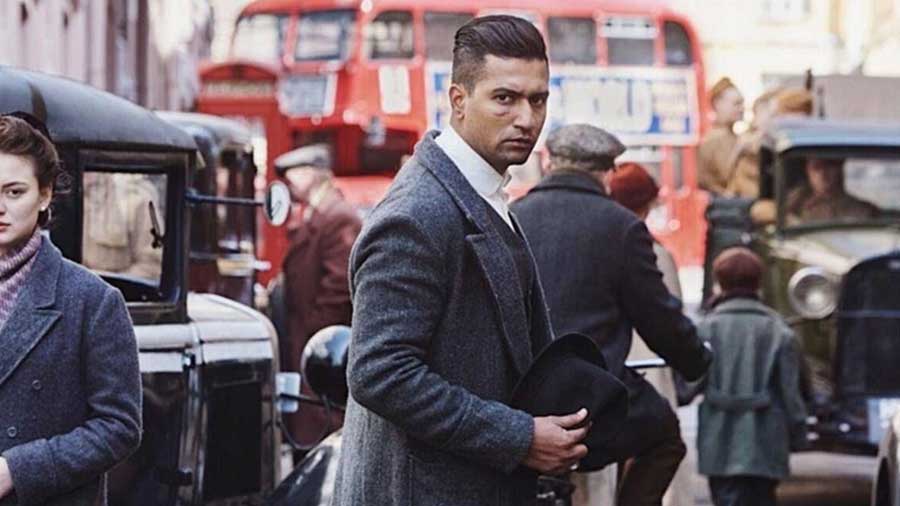When we talk about a film that seems to tick all the boxes, we talk about its cinematography, the colour tone, the editing, the direction, the background music and the songs or the sound track. But rarely do we take into account, actively, the sound of the film, the aural world used to enhance the atmosphere of a film or set the tone of a scene.
“A lot of people don’t actually consider how a film sounds. It depends on how people are approaching what they are watching. If they are watching purely from a content point of view to them it doesn’t matter. There is music, there is dialogue and they are satisfied. But the minute you approach it as an experience you understand the importance of sound design. Because that is what enhances your experience of a film,” says Dipankar ‘Jojo’ Chaki, the Kolkata boy who, along with Nihar Ranjan Samal, was the sound designer for Shoojit Sircar’s Sardar Udham, starring Vicky Kaushal.

Dipankar ‘Jojo’ Chaki, the Kolkata boy, on a shoot location Courtesy: Dipankar ‘Jojo’ Chaki
Keyatala base for 'Sardar Udham'
And the sound of 1920s-1940s India and London is as much a character as are the people and the locations
in the recent Amazon film, which is among the 14 shortlisted for India’s official entry to the Academy Awards. “Sardar Udham is one of those films that any cinematographer, sound designer or any technician waits for all their life,” says Jojo, sitting in a studio in Keyatala near Vivekananda Park, where a lot of the brainstorming and research and then the entire Foley work for Sardar Udham happened during the pandemic.
“The first challenge was that the film came to us during the pandemic and both Kolkata, where I was at that time, and Mumbai were under complete lockdown. We wondered how we were going to pull off an ambitious project like this during the lockdown,” recounts Jojo, the director of HK Studios and FCC Sound Post.
What he and his team had was a very detailed brief from Shoojit Sircar about the film and the setting — what was happening in India and London at that time, the war, the atmosphere, planes flying overhead, news on the radio, the make of cars that were being used, the trams and how they sounded. “He created a vibe and imagery which was a great example of the world and setting of the film. We used that as the first seed of thought and then we built on it,” says Jojo, who then decided to fly down two of his team members to Kolkata and utilise the lockdown for research, referencing and brainstorming. The studio in Keyatala became like a residency where they ate, drank and lived Sardar Udham, without any other distractions. The rest of the team did the same in Mumbai, each team bouncing ideas off each other and then sending it off to Sircar for feedback, then incorporating those notes.
Shoojit da knew exactly what he wanted
“The starting point of sound design for any film is the script but ultimately it is the vision of the director and how he hears the film, and Shoojit da knew exactly what he wanted,” laughs Jojo. But turning this vision into reality is the job of the sound designers and for that the team had to go back to the research table. “We read up articles where people have talked about those times — the Jallianwala Bagh shooting or London in the 1920s, 30s and 40s. We have to make sure that people can’t say things like you have fired only 20 bullets in Jallianwala Bagh whereas there were 1650 rounds fired. We have to be as close to reality as possible and that’s how the research helps. The tram sounds, car sounds, they are all from that period so we can’t use random car sounds or tram sounds, they have to be of the cars that were prevalent then,” explains Jojo, outlining the process that went into creating the sound for Sardar Udham.

Jojo in his studio in Kolkata Courtesy: Dipankar ‘Jojo’ Chaki
The audience's brain knows which sound is real
Some of the sounds Jojo and his team already had in their libraries, some he got from the libraries of friends based out of London, who had recorded those sounds earlier. Then there is live recording of sound effects, which happens during the shooting schedule where the sound team samples all the sounds from the location after the shoot — from the running during the Jallianwala Bagh sequence, the chaos during the Caxton Hall shooting to the handcarts in India those days or the sounds in the old wooden houses of London. “If it is not recorded then and there, in that same authentic process, it doesn’t have the same feel. These make the sound of the film more real because the audience’s brain knows exactly what is real and what is not,” says Jojo.
Once all the sound for the film was collated the team went back to the studio to put the sounds to the visual and make a pre-mix, incorporating the music and the dialogues. “This is where we adjust various aspects of the sound, increasing effects in some places, tweaking things in others so that it preserves the idea that the director has and Shoojit da is very particular about every aspect of it,” says Jojo, who had earlier worked with Sircar in October and Gulabo Sitabo.

Jojo, the supervising sound editor of ‘Sardar Udham’ Courtesy: Dipankar ‘Jojo’ Chaki
After an intense period working on a tight deadline, the sound design team dispersed to recharge once Sircar gave them his okay. “He really liked it,” says Jojo, “and we couldn’t wait to see what the audience thought about it."
When Jojo sat down to watch the film as an audience on October 16 with his family in Kolkata, he had just one request. “I told them it was an important film and that they couldn’t be on the mobile or move around while it was playing,” smiles Jojo. And what was his reaction? “I thoroughly enjoyed it. For me, the best thing about the film was that the whole point was to create that world, make it real and tell the story in a particular way, and after getting out of the technical mindset, with difficulty, and seeing it as a viewer, I can say it was quite well done!” laughs Jojo.
“I think it flowed very seamlessly. The performances were incredible and I think this film is extraordinary in terms of the casting and the authenticity the actors brought to it,” adds Jojo.

Director Shoojit Sircar’s vision was to make the film real, to put the audience there with Udham Singh, and experience everything that was happening
And it is this "authenticity" that he noticed getting the most mention on Google reviews from the general audience. People have written about how this film doesn’t have over-the-top patriotism, nor English actors speaking broken Hindi. “The film is very real. And that was Shoojit da’s vision. He wanted to put you there with Udham Singh. The viewer should be in there to experience everything that was happening. For that it had to be real,” says Jojo, who, even with two National Awards and a Filmfare award to his name, can’t believe the kind of compliments the film has received.
The Jallianwala Bagh challenge
“One of the things I read on Google reviews really blew my mind, it was so far out! Someone wrote that the Jallianwala Bagh scene reminds them of the opening scene from Saving Private Ryan! I was like no way! But when someone says something like that deep down you are like wow! The fact that these two are being compared is just unbelievable,” says a still awed Jojo.
The compliment probably holds more significance as it was one of the two most difficult scenes to execute from a sound design standpoint. The scene is brutal, not just because of the desperate people trying to flee the merciless bullets but because it puts the viewer right in the middle. It isn’t just bodies you see dropping, it is people.

The protest that led to the Jallianwala Bagh massacre Amazon
"It was a huge scene with all the guns firing and people running helter skelter, but the director’s brief to us was that he wanted to capture what was happening to the people, because this film was about the people, not just the act. So to extract that out of a situation where bullets are being fired and hitting people and the walls and people are screaming and dying was difficult. To make it raw and build empathy, instead of just depicting the brutality of the act, matching it with the way the edit team had achieved it was really tough,” recalls Jojo.
The film lets you decide what to feel
So what, according to Jojo, has struck such a chord with the audience? “There are very few films which will have the courage to mix languages like this and culturally set it exactly the way it is. Also, the film lets the audience decide what to feel and experience instead of selling something through music and drama. In this, I think this film sets a precedent and the audience seems to have reacted way more positively to this,” says the St Xavier’s boy who has now set his sights on Hollywood, working on a collaborative project that is also a period piece.
“I think the aesthetics of Sardar Udham just sets it apart. A well-known filmmaker posted on Instagram that this is a benchmark film and I truly believe it is. And it is all credit to Shoojit da,” smiles Jojo.
And do family and friends in Kolkata understand his role in this benchmark production? “I don’t think anybody knows what sound design is about. Friends and family are often just happy to see the name,” laughs Jojo
